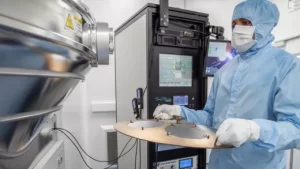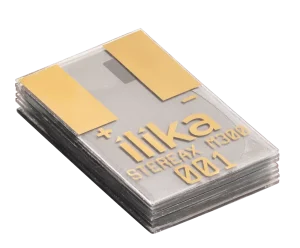Indivior PLC (LON: INDV) on Saturday announced data from two new studies: the first provides insights into dosing of once-monthly SUBLOCADE™ (buprenorphine extended-release) injection for subcutaneous use (CIII), for the treatment of moderate to severe opioid use disorder in patients who inject opioids, and the second study reports on the impact of therapeutic plasma concentrations of buprenorphine in inhibiting the respiratory depression caused by fentanyl. The results were reported at the 50th Annual Conference of the American Society of Addiction Medicine (ASAM) in Orlando, Florida and follow Friday’s announcement of results from the RECOVER™ study and the 18-month long-term safety study.
“We are generating data to help the healthcare community and others understand the unique challenges faced by patients with opioid use disorder and potential ways to overcome them,” said Christian Heidbreder, Ph.D., Chief Scientific Officer of Indivior. “Addressing this crisis, one patient at a time, means having the necessary information to make individualized decisions about optimal use of medically-assisted treatment to support each patient’s recovery-including proper dosing and length of treatment.”
Opioid injection users may benefit from higher SUBLOCADE maintenance doses
This post-hoc analysis investigated patterns of abstinence in both injecting and non-injecting opioid users who participated in the SUBLOCADE Phase 3 double-blind, placebo controlled pivotal trial and the subsequent SUBLOCADE open-label long-term safety study (12 months of treatment). Abstinence was defined as negative urine samples plus negative self-reports of illicit opioid use.
Injecting opioid users (based on self-reports) treated with the SUBLOCADE maintenance dose regimen of 300 mg remained in treatment longer and had a higher study completion rate than those treated with the 100 mg maintenance dose. Furthermore, the mean percentage abstinence (Weeks 10-25) was higher among injecting users treated and maintained with SUBLOCADE 300 mg (58%) vs. those maintained with SUBLOCADE 100 mg (43%); the difference in group means was 15%. Among non-injecting users, the percentage with continuous abstinence was the same (28%) in both dose groups.
These findings are consistent with previous reports that injecting opioid drug users may benefit from higher doses of methadone or buprenorphine.1,2 “Indivior is planning additional studies to further characterize the patients for whom a higher maintenance dose of SUBLOCADE may be warranted,” said Dr. Heidbreder.
Participants in this post-hoc analysis were men and women age 18 to 65 years with moderate or severe opioid use disorder enrolled in a Phase 3 double-blind study and/or a Phase 3 open-label study of SUBLOCADE. They received up to 12 once-monthly doses of SUBLOCADE and individual drug counseling in the double-blind and open-label studies. In the double-blind trial, subjects were randomized to either six SUBLOCADE 300 mg doses or two SUBLOCADE 300 mg doses followed by four 100 mg doses. Patients received either 100 mg or 300 mg dosing in the open label trial based on the medical judgment of the investigator.
Therapeutic buprenorphine plasma concentrations reduce IV fentanyl-induced respiratory depression
This study of eight opioid-tolerant patients showed that buprenorphine plasma concentrations of 2 ng/mL and higher that were achieved following intravenous infusion reduced the extent of respiratory depression from fentanyl. Because of its high potency, fentanyl is often added to or disguised as heroin, leading to respiratory depression and overdose deaths in users who do not know they’re taking it.3 Among the 70,200 U.S. drug overdose deaths estimated in 2017, the last year for which we have data, the sharpest increase was due to fentanyl.4
“Based on this study, the potential protective effect of 2 ng/ml and higher buprenorphine plasma concentrations against fentanyl-induced respiratory depression warrants additional investigation,” said Christian Heidbreder, Ph.D., Chief Scientific Officer of Indivior, Inc. The buprenorphine plasma concentrations targeted in this study were consistent with concentrations previously shown to block the drug-liking effects of illicit opioids and to significantly reduce illicit opioid use compared with placebo.5,6
The eight subjects in this study included five women and three men between the ages of 18 and 55 years who were taking either prescription or illicit opioids at daily doses of 90 mg or more oral morphine equivalents. Only two of the opioid tolerant subjects in this study were users of illicit opioids; the remaining six subjects were using prescribed opioids through a pain specialist and had no history of IV abuse. Five subjects also reported marijuana and/or cocaine use.
About SUBLOCADETM
SUBLOCADE is approved by the U.S. Food and Drug Administration (FDA) for the treatment of moderate to severe OUD in adult patients who have initiated treatment with a transmucosal buprenorphine-containing product, followed by dose adjustment for a minimum of seven days.7 It should be administered only by healthcare providers and should be used as part of a complete treatment program that includes counseling and psychosocial support.7 The overall safety profile for SUBLOCADE, given by a healthcare provider in clinical trials, was consistent with the known safety profile of transmucosal buprenorphine, except for injection site reactions.7 Adverse reactions commonly associated with SUBLOCADE (in ≥5% of subjects) were constipation, headache, nausea, injection site pruritus, vomiting, increased hepatic enzymes, fatigue, and injection site pain. Injection site reactions were reported in 16.5 percent of patients in Phase 3 studies.7 Most of the injection site adverse reactions (ADRs) were of mild to moderate severity.7 None of the injection site reactions were serious and one led to study treatment discontinuation.7
SUBLOCADE has a BOXED WARNING and is available through restricted distribution under the SUBLOCADE Risk Evaluation and Mitigation Strategy (REMS) Program.7 Pursuant to the SUBLOCADE REMS, all healthcare settings and pharmacies that order and dispense SUBLOCADE must be certified and establish processes and procedures to verify the medication is dispensed directly to a healthcare provider for administration by a healthcare provider and is not dispensed directly to the patient.7 Moreover, certified healthcare settings and pharmacies must not distribute, transfer, loan or sell SUBLOCADE.7
INDICATION AND USAGE
SUBLOCADE is indicated for the treatment of moderate to severe opioid use disorder in patients who have initiated treatment with a transmucosal buprenorphine-containing product, followed by a dose adjustment period for a minimum of seven days.
SUBLOCADE should be used as part of a complete treatment program that includes counseling and psychosocial support.











































